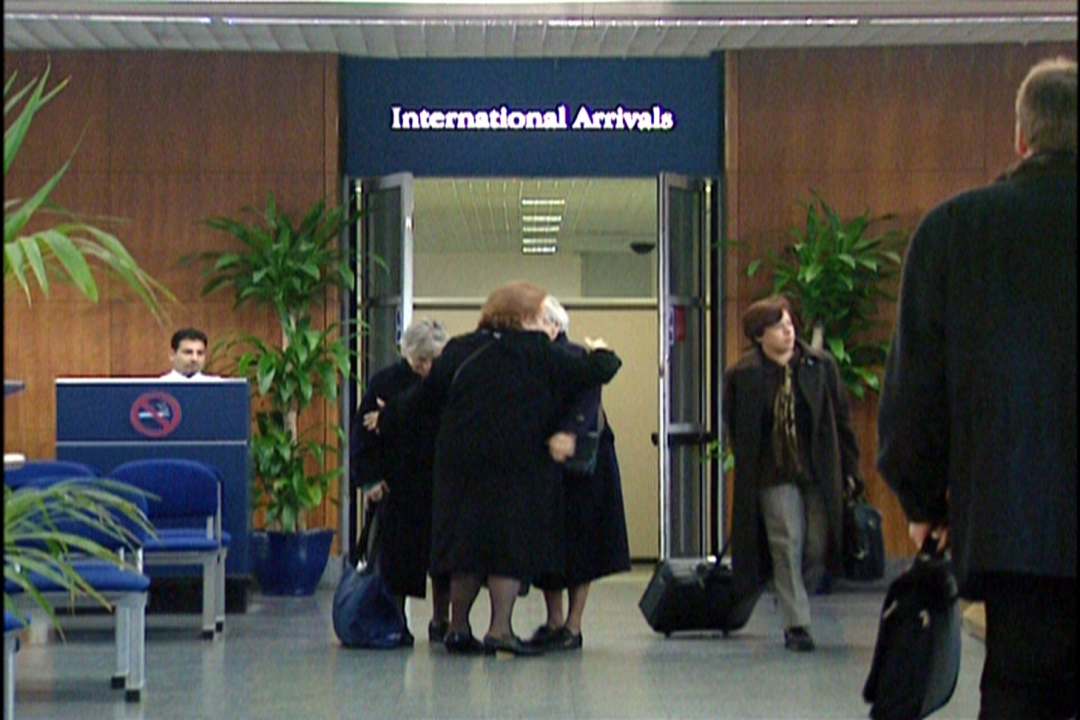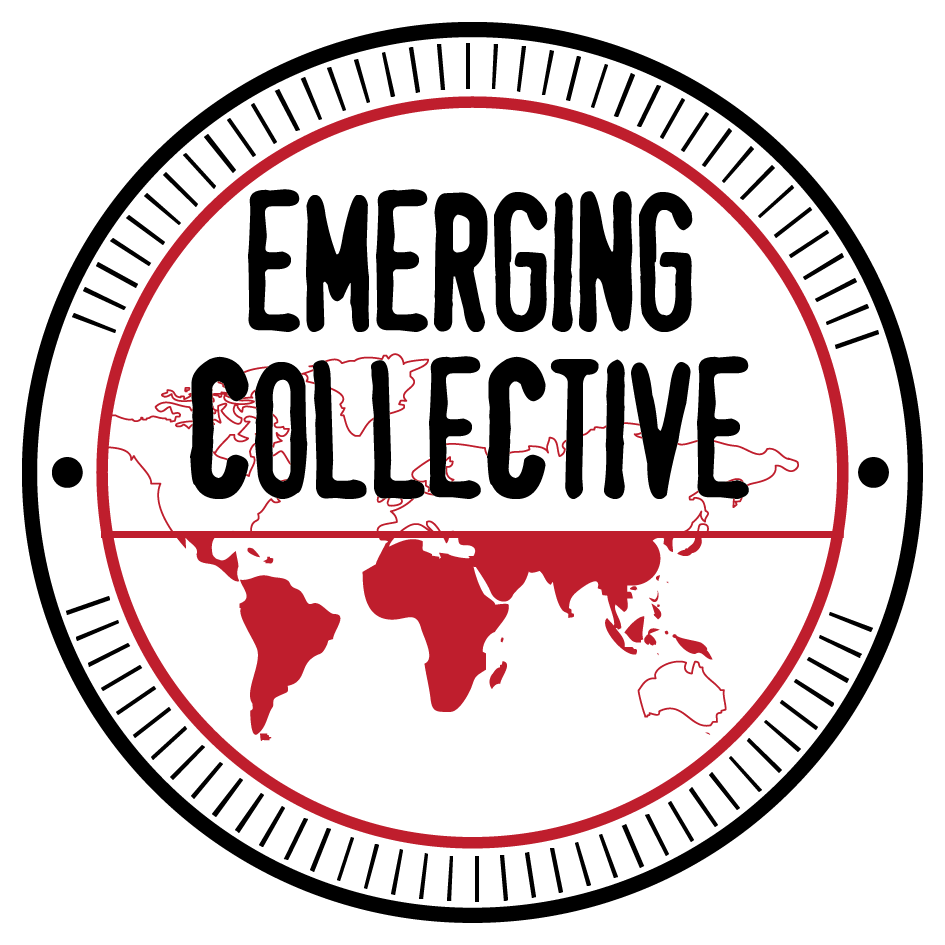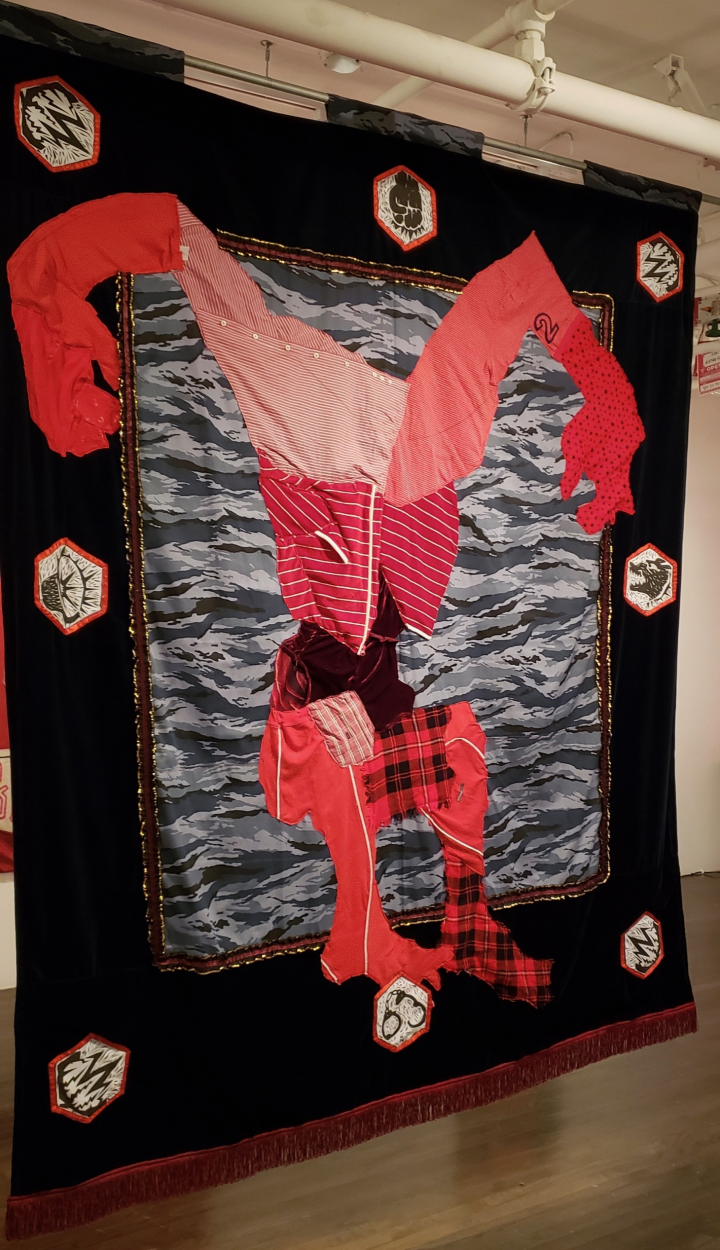Revolution From Without - 8th Floor Gallery in New York City
This story originally appeared in Hyperallergic.





If, like me, you have regularly attended the exhibitions mounted at the 8th Floor gallery in the last few years, you may have noticed a pattern. The majority of its shows have featured a group of artists, thematically arranged, generally engaging with the constraints of political and socioeconomic structures, institutional, symbolic, and ideological power, and the relation of these dynamics to the lived experiences of those among the 99%. I have mostly agreed with the politics of the featured artists, but the exhibitions nevertheless begin to feel predictable. Still, I fully appreciate that given the orientation toward status and wealth of the most visible aspects New York’s art ecosystem, it’s crucial to have the have the 8th Floor, which in its exhibition and public programming is clearly committed to the cause of social justice. And the gallery has come a long way.
The exhibition program was overhauled in 2014, when Sara Reisman was appointed the artistic director of the Shelley & Donald Rubin Foundation (Reisman is now the executive director), which maintains the 8th Floor gallery as its main display space for contemporary art. The Rubins — Shelley and her husband, Donald — also created the Rubin Museum of Art, which specializes in Himalayan art, and founded A Blade of Grass as a means of more directly supporting artists who take on social change as the key part of their practices. After Reisman arrived, there was a decisive shift in programming. According to George Bolster, the director of Programs and External Affairs for the 8th Floor, the gallery had previously drawn on “the Shelley and Donald Rubin Private Collection, which has a special focus on Cuban contemporary art.” Using an ostensibly public gallery as a showcase for one’s private holdings prods me to think of the ways royal collections and princely palaces were utilized in 18th century Europe. Such a space, while perhaps benefitting the artists shown within it, also publicizes the owner’s art collection, broadcasts their discriminating tastes, and affirms their social status.
An indication of how profound a shift Reisman brought to bear is given in the press release from the inaugural show she curated. It reads: “Mobility and Its Discontents signals a shift in the Shelley & Donald Rubin Foundation’s mission, now focused on broadening public access to artistic and cultural activities in New York City.” So by introducing shows that consistently interrogate the forces that condition our life chances and the ideas that can extend the borders of our being, Reisman has given us a tonic. And her roster of exhibited artists have been brilliant: Mel Chin, Andrea Bowers, Tania Bruguera, Felix Gonzales-Torres, Alicia Grullón, Elia Alba, Adrian Piper, Clifford Owens, Jean Shin, Maren Hassinger, Samuel Levi Jones, and on.
Chto Delat, “Tortures (I Want To Add …)” (2019) (photo by the author for Hyperallergic)
Still, walking through some of the shows under Reisman’s tenure I wanted something other than the experience of “Now, this!” when encountering a work adjacent to another piece that dealt with the collective theme but in a different way.
The current show, Revolution from Without, creates a more holistic experience — primarily because of one piece. Mark Wallinger’s “Threshold to the Kingdom” (2000) is a video that plays in the cupola to the left of the entrance to the gallery. It’s a rendition of a video shot in 1998 of the arrivals gate at London City Airport, paced in that now almost cliché style of extravagant slow motion. People arrive and walk, and what strikes me is their bobbing up and down as they stride, which makes me think that walking is indeed sustained falling (as someone told me years ago but I refused to believe). The slow falling and resurfacing of each person complements the music of the video, “Miserere,” a 17th-century libretto on the 51st psalm by the Italian composer Gregorio Allegri. The music just about fills, but doesn’t overflow, the entire space. The lilting, soaring women’s voices tug me upwards, trilling and wafting, and the bass voices come in like an eruption, and the mixed chorus strides forth like an entire nation picking up its weight to move forward in lockstep. Every other work in the gallery is colored by this.
Installation view of Revolution From Without: Kameelah Janan Rasheed, A Rather Precarious Synthax, 2019. Installation commissioned for Revolution from Without … (courtesy the artists, photograph by Julia Gillard)
The music amplifies the elegiac nature of Chto Delat’s graphic, vivid, harlequin banners that tell in poetic language the stories of migrants who, as expressed in the piece “Migrants (To Those Who)” (2019), “were born to fly but sank instead.” The banners have a rough, patchwork aesthetic, and so are more convincing than a pristinely fabricated textile. The piece “Tortures (I Want to Add …)” (2019) is painful to read: “When I was tortured with current, my mouth was full of crumbled teeth and my mouth was full of blood …”
Kameelah Janan Rasheed uses written language as well, but not to form a convincing account of a speaker’s experience, but instead to show how it has various permutations, slips, and elisions, rhymes and contradictions much like our current politics and our political representatives. She displays framed bits of text all over one wall towards the back of the gallery. I can’t help but think of the transition from the last presidential administration to the current one in her play on the word “hope”: “Our Hope is a Sloppy Monarch / Our Hope is a Sloppy Menace / Our Hope is a Sloppy Map.” While the current president is obviously slovenly and haphazard in his degeneracy, Rasheed urges me to understand that it’s our desire for this kind of amoral, bluster-rather-than-substance leadership that really must be mourned (or excised).
Installation view of Revolution From Without: Left to right: Tony Cokes, “Evil.12. (edit.b): Fear, Spectra & Fake Emotions” (2009); Chto Delat, “Tortures (I Want To Add …)” (2019) and “Migrants (To Those Who)” (2019) Both pieces commissioned for Revolution From Without … (courtesy of the artists; photograph by Julia Gillard)
In a back room there are two other works that deal very much with the political possibilities of the impassioned (and performative) wielding of language. “Freedom of Expression: Dread Scott” (2019) is an installation of the documents and images associated with the display and protest around the artist Dread Scott’s highly controversial 1989 piece “What is the Proper Way to Display a US Flag?” It is both nostalgic and tenacious in its emotional register. Though Scott received a great deal of public fury for his display of the US flag on floor of a gallery, the piece shows that his convictions of how to be properly critical of this nation’s history have not wavered. I get the same sentiment looking at the installation by Tania Bruguera, “Free Speech and Civic Literacy: Tania Bruguera” (2019). She documents her performances of “Tatlin’s Whisper #6 (Havana Version),” first in 2009, when she invited those present at the Havana Biennial to voice whatever they wanted to say, and then five years later, when she attempted to reprise the performance. And as I read her written documentation of the piece’s history, the music of Miserere still threads through me, so that I recognize that to have a voice at all is to have a conduit to something brave and deep beyond the self that the self cannot quite touch.
Installation view of Dread Scott, “Freedom of Expression: Dread Scott” (2019) (photo by the author for Hyperallergic)
This show is different from many of the previous precisely because it is so intertwined with the theme of the voice and the sound of it (regardless of its putative theme of revolution). I don’t think that the piece by Raqs Media Collective quite fits in, since it is primarily about an imagined, digitized visual landscape. But this schism is typical of the exhibitions of the past few years. When they cohere (and they mostly do), they often feel dutiful, rather than profound or revelatory, and when they don’t, they feel like cousins who don’t know each other very well, but are nevertheless forced to share a sublet for the summer. Perhaps Reisman (who does organize the majority of the exhibitions) can be even more ambitious. There are other ways of curating that might broaden public access and ring the clarion of social justice. She has done so here. The majority of the work in the exhibition does hold hands and moves toward some rough estimation of what revolution might look like, and does so singing.
Revolution from Without continues at The 8th Floor gallery (17 West 17th Street, Flatiron District, Manhattan) through May 4. It was curated by Sara Reisman.

